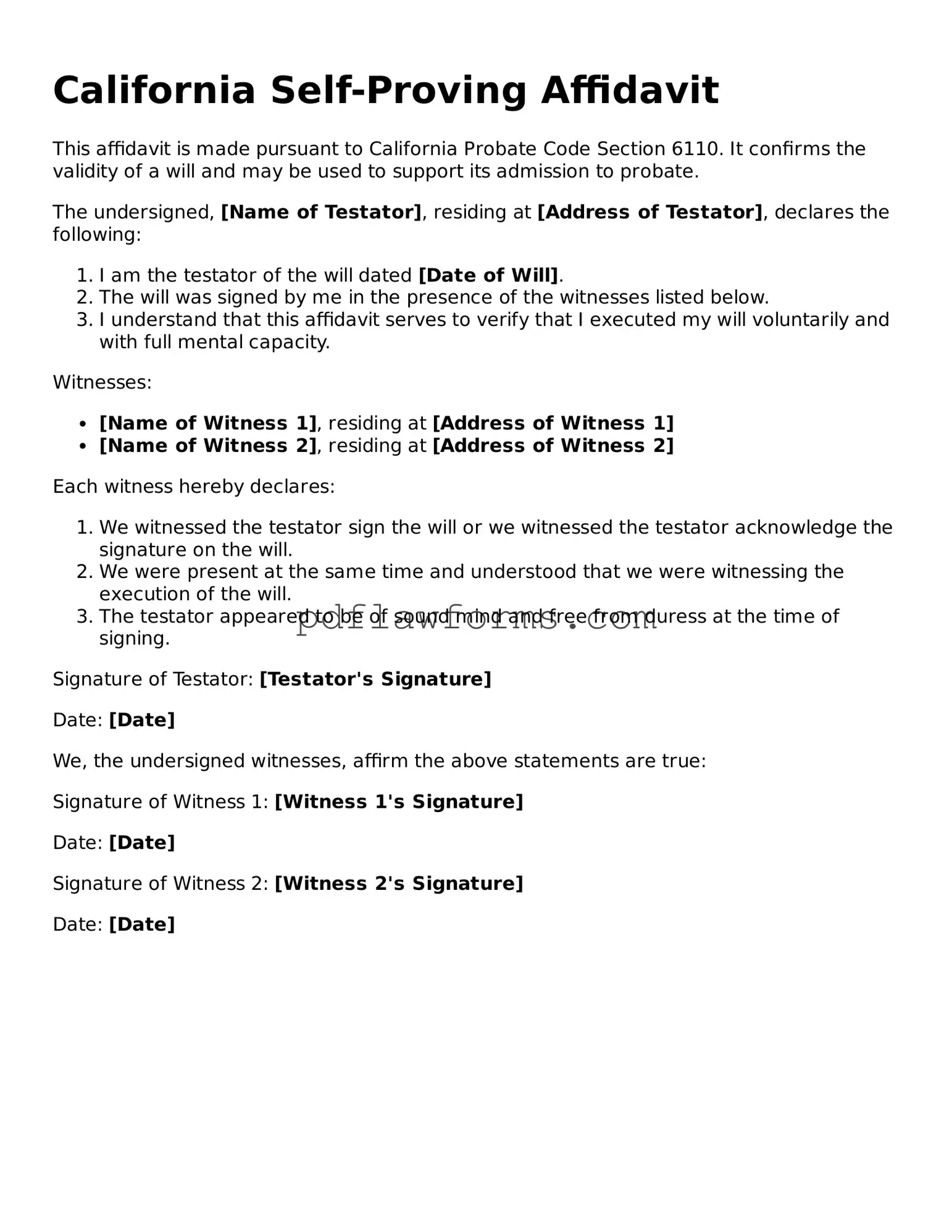The California Self-Proving Affidavit form serves as a crucial tool in the estate planning process, particularly for individuals preparing their wills. This legal document facilitates the validation of a will by allowing witnesses to affirm the authenticity of the testator's signature and the circumstances under which the will was executed. By incorporating this affidavit, testators can streamline the probate process, reducing the likelihood of disputes and challenges to the will's validity. The form requires the signatures of both the testator and the witnesses, along with a declaration affirming that the testator was of sound mind and under no undue influence at the time of signing. Furthermore, the use of a self-proving affidavit can eliminate the need for witnesses to appear in court, thereby expediting the probate proceedings. In California, this affidavit must be executed in accordance with specific statutory requirements to ensure its enforceability. Understanding the nuances of this form is essential for anyone involved in estate planning or the administration of an estate.
